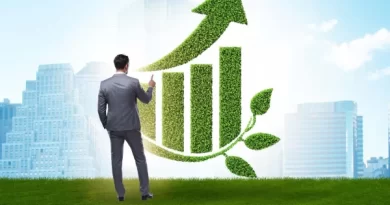Redefining Returns: The Unique Power of Impact Investing
The financial landscape is undergoing a profound transformation. Investors are increasingly seeking to align their portfolios with their values, aiming to generate both financial returns and positive societal impact. This evolving approach, known as impact investing, is not just a trend but a fundamental shift in how we think about investing and its potential to drive change.
Understanding Impact Investing:
Impact investing involves directing capital towards projects, companies, and funds that have the potential to generate measurable social and environmental benefits alongside financial gains. This innovative investment strategy challenges the conventional wisdom that profit and purpose must be separate, proving that they can, in fact, go hand in hand.
The Momentum Behind Impact Investing:
- Global Awareness: As challenges such as climate change, poverty, and inequality become more urgent, investors are increasingly aware of the impact their money can have on these issues.
- Millennial Demand: The millennial generation, poised to control a significant portion of global wealth, prioritizes ethical and sustainable investment choices, driving demand for impact investment opportunities.
- Corporate Shifts: More companies are integrating corporate social responsibility (CSR) into their business models, offering fertile ground for impact investments that align with these values.
Focus Areas in Impact Investing:
Impact investing encompasses a diverse array of sectors, each offering unique opportunities to foster positive change. Key areas include:
- Clean Energy: Investments in renewable energy sources like solar and wind power help mitigate climate change and reduce dependence on fossil fuels.
- Affordable Housing: Funding for affordable housing projects provides safe, sustainable living conditions for low-income communities, addressing critical housing shortages.
- Healthcare Access: Impact investments in healthcare aim to improve the availability and quality of medical services, especially in underserved regions.
- Educational Initiatives: Investing in education supports programs that enhance access to quality education, empowering individuals and driving social progress.
- Sustainable Agriculture: Investments in sustainable farming practices promote environmental stewardship and support local economies.
Measuring Impact:
A key component of impact investing is the ability to quantify social and environmental outcomes. Various frameworks and metrics have been established to assess impact, including:
- GIIRS (Global Impact Investing Rating System): Provides comprehensive ratings of companies and funds based on their social and environmental performance.
- IRIS+ (Impact Reporting and Investment Standards): A set of standardized metrics for measuring and describing the impact of investments.
- SDGs (Sustainable Development Goals): The United Nations’ SDGs offer a global blueprint for assessing impact across areas such as poverty, education, and environmental sustainability.

The Future of Impact Investing:
The future of impact investing is bright, with several trends set to shape its evolution:
- Institutional Engagement: Increasingly, institutional investors like pension funds and endowments are incorporating impact investing into their strategies, significantly boosting capital inflow.
- Technological Innovation: Advances in technology, such as blockchain for transparency and AI for impact measurement, are enhancing the effectiveness and scalability of impact investments.
- Policy Support: Governments and regulatory bodies are crafting policies and incentives to support and promote impact investing, creating a more favorable environment for its growth.
Conclusion:
Impact investing is revolutionizing the finance world, proving that it is possible to achieve financial success while contributing to societal and environmental well-being. As more investors recognize the power of their capital to effect positive change, the potential for creating a sustainable, equitable, and prosperous future expands. By choosing impact investing, we not only secure our financial futures but also help build a better world.
FAQs:
1. What exactly is impact investing?
2. How does impact investing stand out from traditional investing?
Traditional investing focuses solely on financial returns, while impact investing prioritizes measurable social and environmental outcomes in addition to financial performance. Impact investors evaluate opportunities based on their potential to create real-world positive change.
3. What kinds of ventures do impact investors typically fund?
Impact investors often fund ventures in sectors such as renewable energy, affordable housing, healthcare accessibility, education, and sustainable agriculture. These sectors are chosen for their potential to address critical global issues like climate change, poverty, and social inequality.
4. How is the impact of investments measured?
Impact is measured using various frameworks and standards. Prominent tools include the Global Impact Investing Rating System (GIIRS), Impact Reporting and Investment Standards (IRIS+), and alignment with the United Nations’ Sustainable Development Goals (SDGs), which offer comprehensive metrics for assessing social and environmental outcomes.
5. What financial returns should I expect from impact investing?
Financial returns in impact investing can range from below-market to market-rate, depending on the specific investment. While some impact investments offer competitive returns comparable to traditional investments, others may prioritize social impact over financial gain.
6. Is there a higher risk associated with impact investing?
Impact investing carries risks similar to traditional investing. These can be managed through thorough due diligence, diversification, and selecting investments with strong impact potential and sound business models. The perceived risk is often balanced by the social and environmental benefits.
7. Who can participate in impact investing?
Anyone can become an impact investor, from individual retail investors to large institutional entities. The impact investing ecosystem includes a diverse array of participants, such as individuals, family offices, foundations, and pension funds.
8. How do I start my journey into impact investing?
Begin by identifying your social or environmental priorities. Research potential impact investments and consider consulting with a financial advisor who specializes in impact investing. Start small to build experience and gradually expand your impact portfolio.
9. Are there tax advantages to impact investing?
In some regions, impact investing may come with tax incentives, particularly for investments in areas like renewable energy or affordable housing. It’s advisable to consult with a tax professional to understand the specific benefits and regulations applicable to your investments.
10. Can impact investing truly create a significant impact?
Yes, impact investing can drive substantial change. By allocating capital to projects and companies that address pressing global issues, impact investors play a crucial role in fostering sustainable development, social equity, and environmental conservation while achieving financial returns.
11. How is the landscape of impact investing changing?
The impact investing market is expanding rapidly due to heightened awareness of global challenges and a growing interest in socially responsible investments. Technological advancements, supportive regulatory environments, and increasing investor demand are propelling this growth.
12. Can I incorporate impact investments into my existing portfolio?
Absolutely. Many investors blend impact investments with traditional assets to achieve a balanced portfolio that aligns financial goals with personal values. This integrated approach allows for both economic gain and meaningful impact.
13. What are some common misconceptions about impact investing?
Common misconceptions include the belief that impact investing always sacrifices financial returns, is exclusively for wealthy individuals, or lacks measurable outcomes. In reality, impact investing can offer competitive returns, is accessible to various investors, and employs robust impact measurement frameworks.
14. Where can I find more information about impact investing?
Numerous resources are available, such as books, online courses, industry reports, and organizations like the Global Impact Investing Network (GIIN). Financial institutions and advisory firms also provide valuable insights and guidance on impact investing.
15. How can I keep up with trends in impact investing?
Stay informed by following industry news, subscribing to relevant publications, attending conferences, and joining networks dedicated to impact investing. Engaging with the community can provide ongoing education and networking opportunities.




